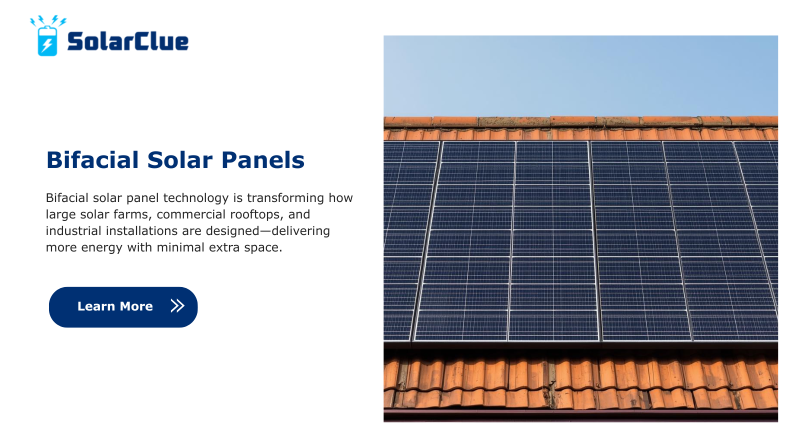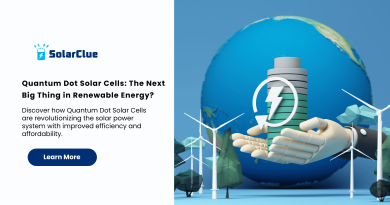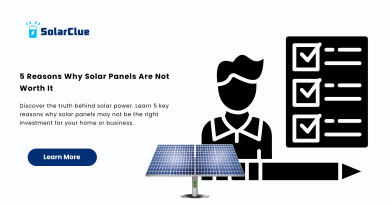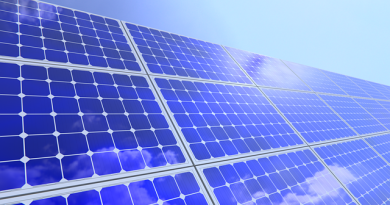Bifacial Solar Panels: Performance, Cost, and Applicability
As solar energy continues to evolve, bifacial solar panels have emerged as one of the most promising innovations in the renewable energy industry. Unlike traditional monofacial panels that capture sunlight from only one side, bifacial panels harness energy from both the front and rear sides, increasing total power output and improving efficiency.
This technology is transforming how large solar farms, commercial rooftops, and industrial installations are designed—delivering more energy with minimal extra space.
Table of Contents
What Are Bifacial Solar Panels?
Bifacial solar panels are photovoltaic (PV) modules that can generate electricity from sunlight striking both their front and back surfaces.
- Front side: captures direct sunlight.
- Rear side: utilizes reflected light (known as albedo light) from surfaces like concrete, sand, snow, or rooftops.
These panels are typically made using glass-glass or glass-backsheet construction, making them more durable and suitable for outdoor, high-reflectivity environments.
How Do Bifacial Solar Panels Work?
Bifacial solar panels operate on a simple principle: maximize sunlight capture.
- Direct Irradiance: The front side functions like a traditional solar panel, converting sunlight into electricity through silicon-based cells.
- Reflected Light (Albedo): The rear side picks up scattered or reflected sunlight from surrounding surfaces.
- Dual-Sided Conversion: The total energy output becomes a sum of both direct and reflected energy, increasing yield by 5–30% depending on installation conditions.
Example:
A bifacial array installed above white concrete or snow can produce up to 25% more power compared to a conventional monofacial system in the same location.
Performance Advantages of Bifacial Solar Panels
1. Higher Energy Yield
- Bifacial panels can deliver 10–30% higher output than standard panels.
- The gain depends on tilt angle, ground reflectivity, height, and mounting design.
2. Better Temperature Control
- The open-back design allows better air circulation, leading to lower operating temperatures and improved efficiency over time.
3. Long-Term Durability
- Most bifacial modules use tempered glass on both sides, offering stronger resistance to environmental wear, UV degradation, and moisture.
4. Lower Levelized Cost of Energy (LCOE)
- Although initial investment is slightly higher, the overall cost per kWh generated decreases due to improved lifetime energy production.
5. Enhanced Aesthetic Appeal
- The transparent look of bifacial panels makes them suitable for modern architectural designs, pergolas, and solar façades.
Cost of Bifacial Solar Panels
The cost of bifacial solar panels has been steadily decreasing due to mass production and advancements in manufacturing.
| Parameter | Monofacial Panels | Bifacial Panels |
|---|---|---|
| Panel Cost per Watt | ₹25–₹35 | ₹30–₹40 |
| Installation Cost (Approx.) | Moderate | Slightly higher (due to tilt/mount) |
| Efficiency Range | 17–21% | 20–25% |
| Expected Lifetime | 25 years | 30+ years |
| ROI Period | 4–6 years | 3.5–5 years |
While the upfront cost of bifacial systems is typically 5–15% higher, their increased output and longevity make them more cost-effective over time.
In large solar farms, bifacial installations have already achieved LCOE parity or better compared to monofacial systems.
Applications and Use Cases
Bifacial solar panels are versatile and can be used in multiple settings:
1. Utility-Scale Solar Farms
Ideal for open areas where the panels can be elevated above reflective surfaces such as sand, gravel, or water. These setups can generate up to 25% more power.
2. Commercial Rooftops
Perfect for flat rooftops with reflective coatings. Businesses can enhance energy generation without needing extra space.
3. Solar Carports and Parking Areas
Panels installed above cars can use light reflected from the ground or vehicles, optimizing energy capture.
4. Floating Solar Installations
Water bodies reflect sunlight effectively, making bifacial panels a strong choice for floatovoltaic systems.
5. Building-Integrated Photovoltaics (BIPV)
Used in glass façades, skylights, and canopies, bifacial panels blend design with functionality.
Challenges and Limitations
Despite their advantages, bifacial solar panels come with certain limitations:
- Higher upfront installation cost due to specialized mounting structures.
- Performance highly dependent on ground reflectivity and installation height.
- Limited data on long-term degradation rates (since it’s relatively new technology).
- Shading sensitivity — even small obstructions can reduce reflected light efficiency.
However, these challenges are being mitigated with improved mounting designs, AI-based shading analysis, and reflective ground coatings.
Future Outlook of Bifacial Solar Technology
Global adoption of bifacial panels is increasing rapidly. The International Technology Roadmap for Photovoltaics (ITRPV) predicts that over 70% of utility-scale projects by 2030 will use bifacial modules.
Innovation in tracking systems, anti-reflective coatings, and lightweight glass materials will continue to drive costs down. With better understanding of albedo effects and AI-powered optimization tools, bifacial panels are poised to become the new industry standard.
Conclusion
Bifacial solar panels represent a major leap forward in renewable energy efficiency. Their ability to generate power from both sides, coupled with durability and aesthetic appeal, makes them ideal for a wide range of installations—from solar farms to commercial rooftops.
Though they require slightly higher initial investment, the long-term benefits in terms of energy yield, ROI, and sustainability make bifacial systems a smart investment for the future of solar power.
Whether you’re planning a residential, commercial, or industrial solar setup, bifacial technology offers unmatched potential to maximize every ray of sunlight.




